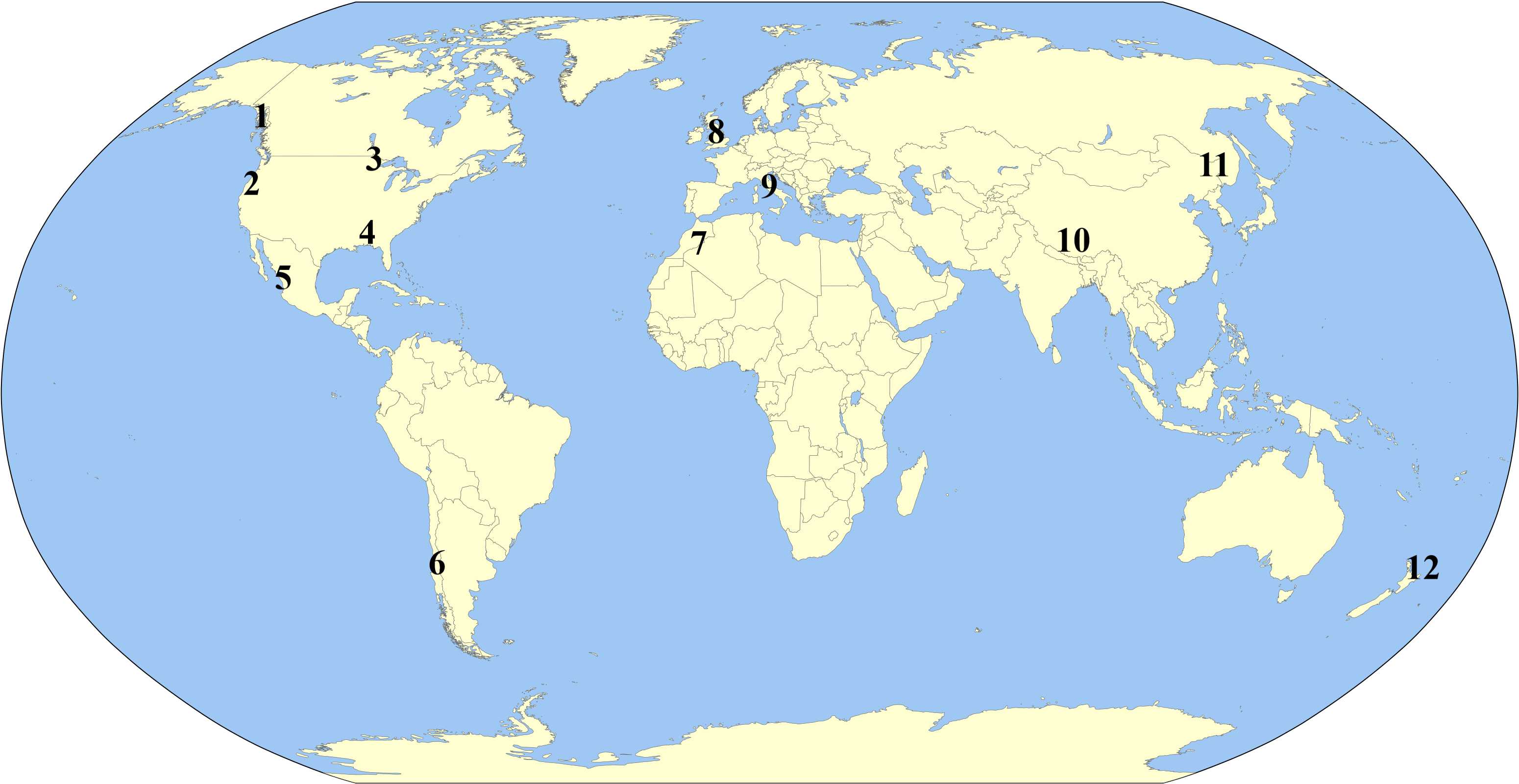
Cosmopolitan Conifers Trivia Quiz
Conifers include some of the world's mightiest and most beautiful tree species. Found on most continents, they truly deserve the epithet of "cosmopolitan". The names and the hints should help you to place each tree in the correct spot on this world map.
A label quiz
by LadyNym.
Estimated time: 3 mins.
